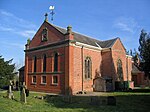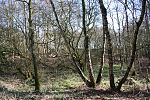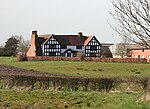Dodcott cum Wilkesley

Dodcott cum Wilkesley is a civil parish in the unitary authority of Cheshire East and the ceremonial county of Cheshire, England. The hamlet of Wilkesley (at SJ 628 410) lies 2½ miles to the west of Audlem and 7 miles to the south west of Nantwich. The parish also includes the village of Burleydam, the largest settlement, as well as the small settlements of Butterley Heyes, Cheshire Fields, Combermere, Lightwood Green and Royal's Green. It also formerly contained the settlements of Pinsley Green and Smeaton Wood, now located in Wrenbury cum Frith civil parish. Nearby villages include Adderley and Calverhall in Shropshire and Audlem, Newhall and Wrenbury within Cheshire. According to the 2001 census, the parish had a population of 380, increasing to 415 at the 2011 Census.
Excerpt from the Wikipedia article Dodcott cum Wilkesley (License: CC BY-SA 3.0, Authors, Images).Dodcott cum Wilkesley
Whitchurch Road,
Geographical coordinates (GPS) Address Nearby Places Show on map
Geographical coordinates (GPS)
| Latitude | Longitude |
|---|---|
| N 52.981 ° | E -2.567 ° |
Address
Royals Green, Whitchurch Road / Walkmill Farm
Whitchurch Road
SY13 4AX , Dodcott cum Wilkesley
England, United Kingdom
Open on Google Maps









